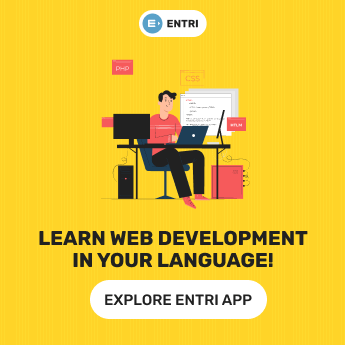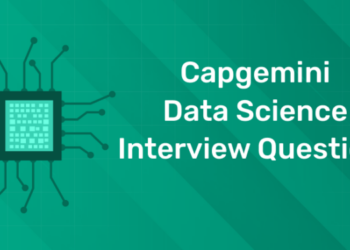Table of Contents
Did you know what is the fastest-growing programming language in the world is?
Python! Yes, it is the most popular, readable, and easy-to-use programming language for web development. But, it is not just for web development. Python is an ultimate yet powerful language that you can use for data science, artificial intelligence (AI), machine learning (ML), and scientific computing.
Besides, it is used in many industries, including Finance, Science & Education, Computers, Electronics & Technology, and more. In addition, large companies, such as Google, Facebook, Instagram, Netflix, and more, use Python in many ways.
It has played a significant role in web development for over two decades, from powerful web frameworks to micro-frameworks.
Python has numerous frameworks for web development, data science, and more. Therefore, this article will focus on the top 10 Python Frameworks in 2023 to get maximum benefits.
Python Frameworks That You Must Know In 2023
1) Django
It’s hard to talk about web development frameworks without bringing up Django. Django is one of Python’s oldest and most popular frameworks, which was released in 2005— and it happens to be created and supported by a leading web host provider.
It was originally conceived as an engine that helps developers build content-based websites (such as news sites). Still, since its release, developers have used it to power all sorts of different applications and services.
With Django, you can quickly build powerful apps with little or no knowledge of low-level details like relational databases or web servers — something that makes it especially appealing to beginners just getting started in web development.
“Ready to take your python skills to the next level? Sign up for a free demo today!”
2) Pyramid
Pyramid is a mature and feature-rich Python web framework. Plus, it has a wide range of uses, including websites, web APIs, and anywhere you would want to use a popular programming language like Python. In addition, Pyramid is known for its flexible, modular architecture, extensibility, and testability.
One of Python’s most significant assets as a developer language is its community support — and it shows through here with user engagement via mailing lists, IRC channels, Stack Overflow, and more.
Several other Python frameworks compete with or complement Pyramid; however, many leading technology brands prove themselves a solid choice. Besides, several Python development companies also recommend Pyramid for web development.
3) CherryPy
CherryPy is an excellent Python framework that can be used as the foundation for a variety of web applications. Moreover, it is designed to be simple to learn and use. It focuses on simplicity and usability, making it one of the most approachable frameworks on our list.
If you’re an intermediate developer who wants to try something new, CherryPy may be right up your alley. While advanced developers might find its features insufficient, it offers beginners a chance to get comfortable with working with Python before diving into more complicated frameworks.
A huge selling point of CherryPy is that it allows users to run their code without relying on other people or services. You could deploy an application using only components found within CherryPy if you wanted to.
“Experience the power of our web development course with a free demo – enroll now!”
4) Flask
Flask is one of Python’s most popular web frameworks, and it remains one of Python’s fastest-growing tools. Flask is simple to learn, elegant to use, has an extensive library of add-ons and is easy to deploy. Its popularity stems from its simplicity: it makes it easy to get up and run with minimum effort.
Although, if you’re looking for a faster way to build websites with Python, check out Flask. It doesn’t have the same level of structure as Django or Pyramid, but it still provides an ideal environment to build functional applications. With its extensive documentation and active community support, you can rest easy knowing that Flask is here to stay.
5) Bottle
Bottle is a Python WSGI micro web framework that is fast, simple, and lightweight. Also, it is distributed as a single file module and requires only the Python Standard Library. Bottle’s features are similar to Flask’s, making switching between frameworks easy.
If you want to add some quick prototyping capability or simply create a landing page quickly then, Bottle can be used out of the box with minimal knowledge of web programming.
Flask’s features might be a better fit for more complicated web applications. However, Bottle is worth considering if you focus on code readability and simplicity.
6) WebPy
Because Python was designed as an easy-to-read language, it’s particularly well suited to web development — which is why WebPy has gained so much traction over recent years. In addition, because of its simplicity and relatively small size, Python can process websites faster than other programming languages.
Thus, if you’re a designer looking to add a dynamic element to your site, or want to create an engaging site from scratch using Python code, then using WebPy is your best bet.
Moreover, WebPy is well-maintained and has a thriving community of developers who are always happy to help. So if you get stuck, there’s a good chance that someone on the WebPy forums will have an answer for you.
“Get hands-on with our python course – sign up for a free demo!”
7) TurboGears
TurboGears is one of those frameworks that straddles between being a full-fledged framework and an add-on library. Besides, one of its key selling points is its architecture, which allows for scalability and ease of maintenance.
In addition to turbocharging your Python development, TurboGears can also speed up your website — by boosting performance and productivity. While TurboGears’s documentation is somewhat hard to navigate, it comes with complete API documentation and provides developers with a handy sample application.
Also, because TurboGears is a full-fledged framework, you can do just about anything you need with it. This makes it an attractive option for larger projects that require more flexibility.
8) CubicWeb
CubicWeb is a semantic web framework that allows Python developers to create smart web applications. Besides, it was designed to make it easy for developers to create RDF data, which can be used in various ways, including powering search engines and data analysis.
CubicWeb is built on several other Python libraries, including WebOb and SQLAlchemy.
Moreover, if you’re looking for a way to make your Python applications more semantic, or want to experiment with the semantic web, then CubicWeb is the perfect tool for you. It comes with an extensive documentation set, making it easy to get up and running in no time.
“Ready to take your python skills to the next level? Sign up for a free demo today!”
9) AIOHTTP
The AIOHTTP project is a high-level, asynchronous framework that allows developers to build event-driven programming applications. It was built with high scalability and performance in mind and can handle many requests with ease.
The AIOHTTP framework is perfect for creating single-page applications, which are becoming increasingly popular due to their speed and responsiveness.
AIOHTTP comes packaged with several libraries that make common tasks such as database access, HTTP request, response objects, and file uploads easier.
You can also use other popular libraries with AIOHTTP, such as Flask and Twisted. This makes it an excellent framework for combining the best features from each library.
10) Dash
Hosting thousands of web applications and serving millions of requests per day, Dash is one of Python’s most popular microframeworks. In development since 2014, Dash emphasizes simplicity and handles many common web-development tasks, such as cookies, sessions, templating, URL routing, and more.
Dash also comes with several pre-written applications that make it extremely easy for developers to get up and run.
Because Dash is designed to be modular, you can choose which components you need during setup — while leaving out the ones you don’t.
This makes Dash an attractive choice for developers who want to use only specific functions of a microframework.
Conclusion
In the web development industry, Python has become very popular over time. But since it is an open-source language that anyone can modify and use for free, many developers are coming up with their Python frameworks to help solve issues when developing applications.
It has been estimated that there are already more than 260 Python frameworks available today. So to keep up with all these new technologies, these were the list of what we believe will be some of the top Python frameworks in the field by 2023.














